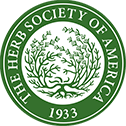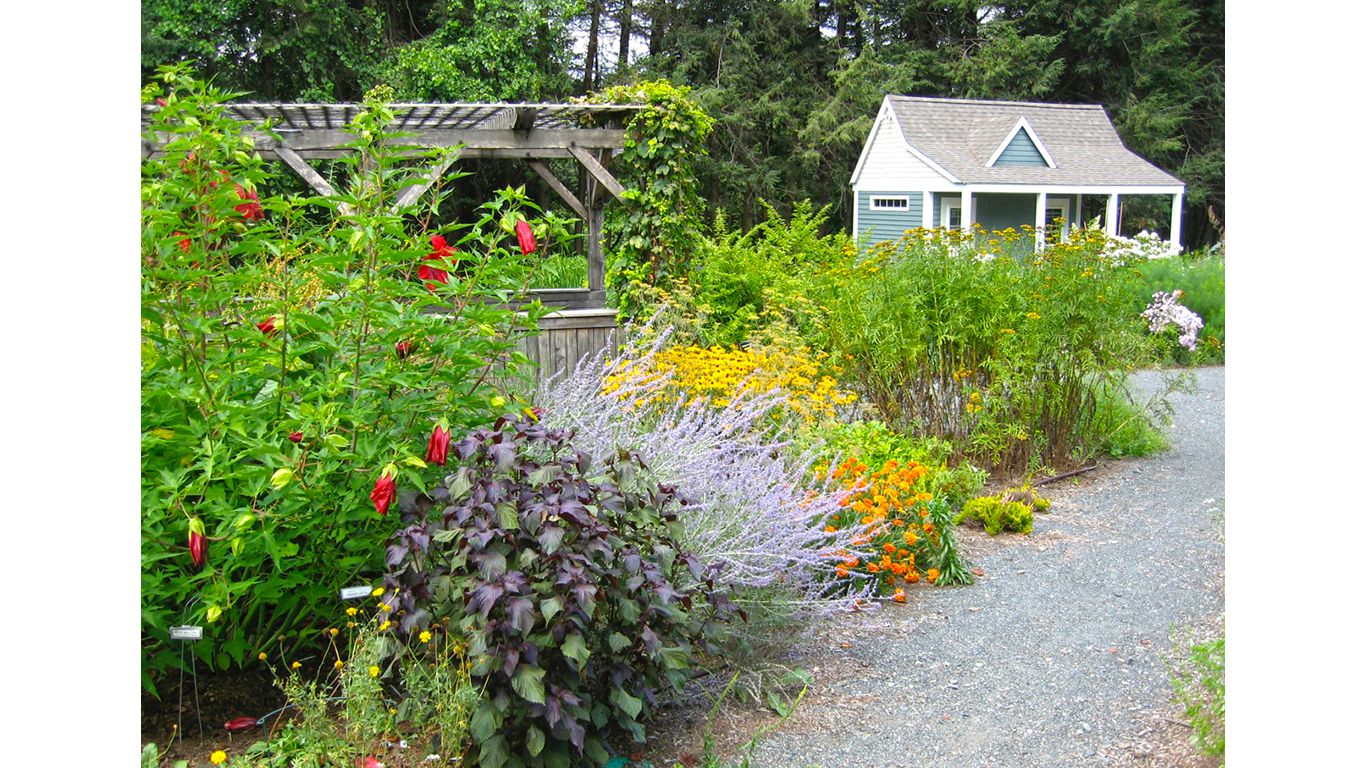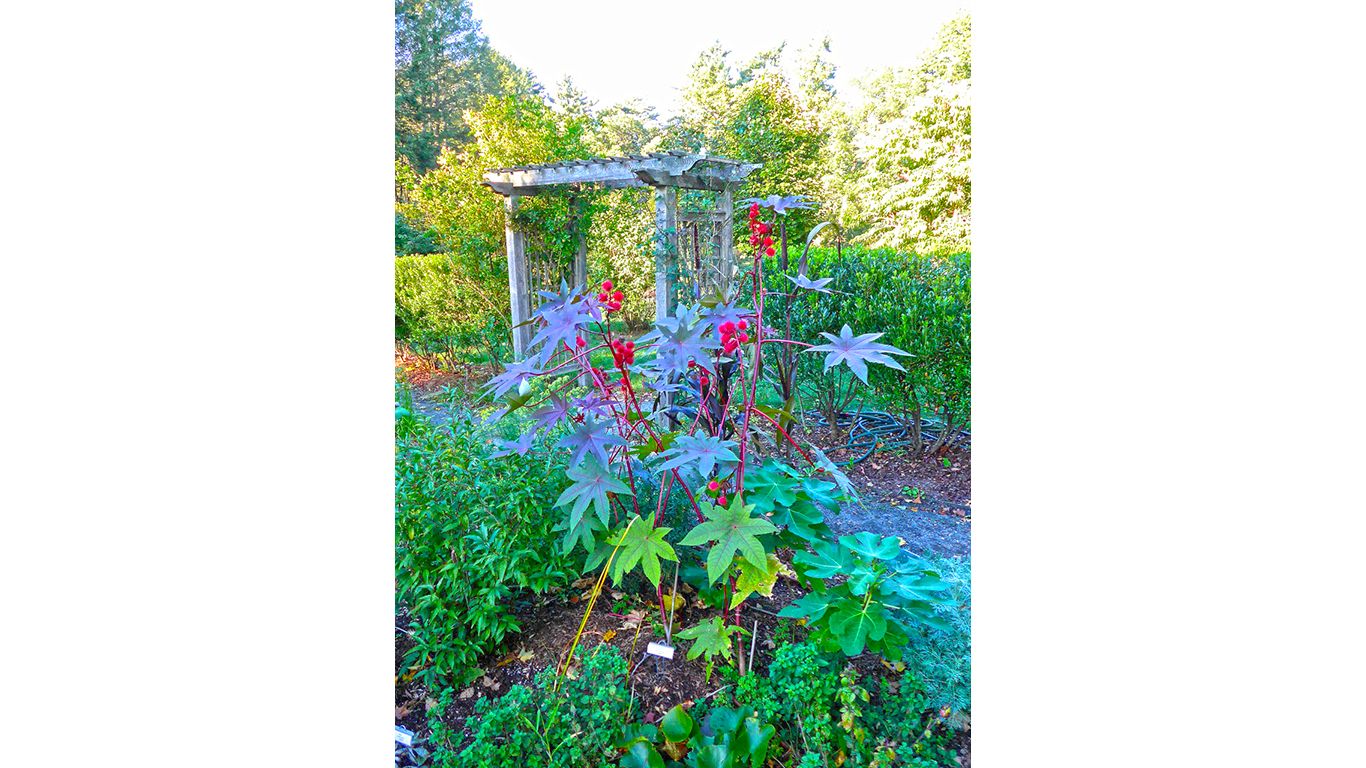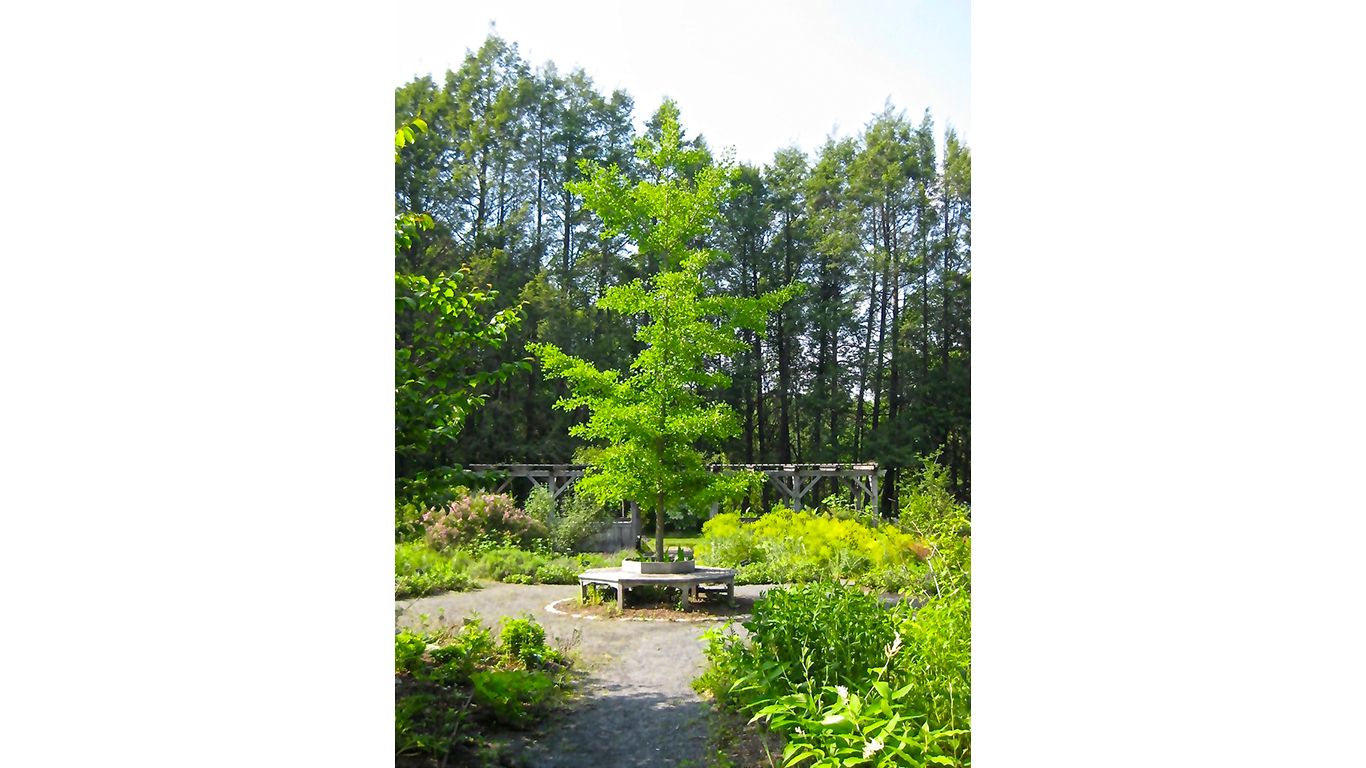Gardens of The Herb Society of America
New England Unit
New England Unit
BBACK TO GARDENS OF HSA ALBUM
The New England Unit's Teaching Herb Garden is located on the grounds of the Massachusetts Horticultural Society, known as "Mass Hort," at the Elm Bank Reservation at 900 Washington Street in Wellesley, Massachusetts. Elm Bank is adjacent to Route 16 and the Charles River which winds around it on three sides. On the 182 acre property, there are woods, lawns, a separate lawn with soccer fields, buildings from the former Cheney-Baltzell estate, and the buildings, greenhouses, and gardens of Mass Hort. Elm Bank is open to the public, from early morning until sundown, seven days a week.
As of 2015, there are ten gardens on the 36 acre Massachusetts Horticultural Society property. Six are theme gardens of Mass Hort. The Teaching Herb Garden is one of four "Society" Gardens on the north side of the property, and was the first Society Garden to be installed.*
Marie Stella, noted garden designer and landscape historian, designed the garden. Mass Hort undertook the initial work of site preparation, including coordinating irrigation and utilities. Construction began in 2000. The whole Unit turned out and labored for four years. The underlying soil is clay "hard pan," which required the importing of garden soil. The paths are crushed granite stone. The structures include benches and windowboxes on the south side, and a pergola, on the north side. An inkberry hedge connects the structures. The garden measures 8000 square feet.
The center of the design is an octagonal bench which surrounds our Ginkgo biloba tree. Eight triangular theme beds radiate out from the bench. Berggarten sage is planted in each bed, next to the path that surrounds the tree.
The Gardens and Collections
USDA Hardiness Zone 5
1. Fragrance Garden - Plants include the strong scents of southernwood and santolina, as well as the pleasing scents of mints, lavenders, pelargoniums, and monarda "Rasberry Wine." Lilac "Miss Kim" anchors the bed.
2. Dooryard Garden - From Colonial times forward, household plots included culinary, medicinal, and other useful herbs brought from the Old World by the settlers, as well as herbs native to the New World.
3. Edible Garden - Along with wild bergamot, and other edible flowers, there are forageable plants that are considered "weeds" that are forebears and relatives of food plants.
4. Medicinal Garden - There are herbs that represent the history of medicine, and those that still yield valuable medicinal compounds in today's pharmaceutical industry. Some are as tiny as Szechuan buttons, and others, like black cohosh, have long stems of delicate flowers that are visible from a distance.
5. Native American Garden - These plants were used by Native Americans for food, medicine, household maintenance, dye, etc. The tiny hepaticas are the first flowers of spring; fourleaf yam is draped over a tipi of branches; and in August, Jerusalem artichoke sends its giant stems above the garden, so that we can see the yellow flowers bloom
6. Salvia Garden - In early summer, hardy salvias come back to life, including meadow sages, and lyreleaf sage. We also plant tender salvias that share their colorful blooms at summer's end.
7. Culinary Garden - This bed displays different varieties of the aromatic herbs for daily use in cooking, as well as individual favorites like sweet bay, lemon verbena, French sorrel, bronze fennel, elderberry, and daylilies. An apple quince tree and the Julia Child rose stand guard.
8. Dye Garden - Among the plants that are sources of vegetable dyes, is dyer's chamomile that yields a yellow dye from its flowers. The leaves of yellow-flowered dyer's woad yield a blue dye. Madder roots yield a red dye.
On the east side of the central beds are:
9) The Ecumenical Garden - Here are herbs important to five religions: Buddihism, Christianity, Hinduism, Islam, and Judaism. The bed is built so that plants are placed where they will grow the best, in four different growing conditions: wetland, desert , forest, and farm.
10) The Allium Garden - This newly renovated bed includes culinary alliums and ornamental alliums from small to tall that bloom throughout the summer. In July, we will harvest two long rows of garlic for the first time.
On the west side, are:
11) Two Groundcover Gardens: The shade bed includes herbs that welcome moisture, including comfrey hidcote blue, violets, ajuga, sweet woodruff, and golden creeping jenny. The bed in full sun includes varieties of dianthus, thrift, speedwell, and thyme.
The pergola is centered on the north border. The canes of Rosa "New Dawn" pink climb the posts, to the cross beams and lattice. Garden visitors of all ages sit here, chat, and often eat lunch. Filling in the Garden border, beside the pergola, are tall plants and shrubs:
12) Herbal Perennial Garden. Baptisia, American Beauty Berry, Siberian Iris "Caesar's Brother," Amsonia Hubrichti, and Red Leaf Rose (Rosa glauca) are among the plants that form a tall wall at the rear of the garden.
13) The Rose Garden. On the other side of the pergola are hardy varieties of old, fragrant, long blooming roses - hybrid rugosas, climbing roses, shrub roses, and a damask rose. Roses can be found, as well, in the Allium Garden, the Edible Garden, the Perennial Garden, and climbing the two arbors on the east and west sides.
Behind the pergola, on the north side, have been three herbal trees. Because they are located at the edge of woods, the deer have found them and have judged them delicious. We will plant new trees this year, if necessary.
Our spring plant sale is the chief way that we raise funds for maintaining the Teaching Herb Garden. We sell commercially grown plants, member's plants, and plants that have multiplied in the Teaching Herb Garden. In May 2015, our sale will be take place at Mass Hort's Gardener's Fair. Additional ways of raising money include speakers and programs for which we charge admission. In 2014 we received a one time garden grant from the Andover Massachusetts unit that was closing its doors.
We begin our spring work in the garden with a clean up day in late April. From then until early November, the garden requires, on average, approximately 15 - 20 volunteer hours per week. There is an energetic and knowledgeable chapter of the Master Gardeners of Massachusetts that volunteers many hours at Mass Hort. We have been the beneficiaries of their time and skills as we work together in our garden. Virtually all of the Master Gardeners have enjoyed learning about herbs, and several have joined the New England Unit.
Several activities require paid assistance: spring clean up, hedge pruning and weeding, mulch spreading, and path repair.
Our informal teaching program occurs whenever we are working in the garden. Mass Hort has many visitors, and they love to ask lots of questions, no matter the season. Our scheduled programs take place inside in a neighboring building, and are open to Mass Hort and the public. During our annual plant sale, even when it rains, we enjoy the interest, curiousity, and enthusiasm of our customers. At our sale this spring, we will encourage our smaller customers to build temporary fairy houses in the Edible Garden, and we will offer garden tours and lore.
The New England Unit has many members that drive for an hour, or an hour and a half, to attend meetings, or to work in the garden. We make every attempt to vary the location of our activities and programs so that the same people don't have to drive long distances for every meeting.
*The "Mass Hort" gardens include: the All America Selection Trial Gardens, Weezie's Garden, The Bressingham Garden, The Italianate Garden, The Goddess Garden, The James Crockett Memorial Garden. The society gardens are the Rhododendron Society, the Hemerocallis Society, the Noanett Garden Club and our Teaching Herb Garden of the New England Unit of The Herb Society of America.
Resources:
"Guide to the Teaching Herb Garden": The New England Unit of the Herb Soceity of America
Welcome to the Unit, The New England Unit of the Herb Society of America: Jean Nielsen Berry, Lucille McGarry Dressler, Catherine Farlow Hitchings, Faith Greely Scovel, 2010
Massachusetts Executive Office of Energy and Environmental Affairs:
http://www.mass.gov/eea/agencies/dcr/massparks/region-north/elm-bank-reservation.html
Massachusetts Horticultural Society: www.masshort.org
New England Unit of the Herb Society of America: www.neuhsa.org






